This post may contains affiliate links. Read our full disclosure here.
Ever noticed how some wines make your mouth feel dry and puckered, while others seem to zip across your palate with bright crispness? Those sensations aren’t just random – they’re the work of tannins and acidity, the true architects of wine’s character. When my wine-loving friends and I gather for tastings, we often start by discussing flavors, but it’s the structural elements of tannins and acidity that really determine whether a bottle will be remembered long after the last sip.
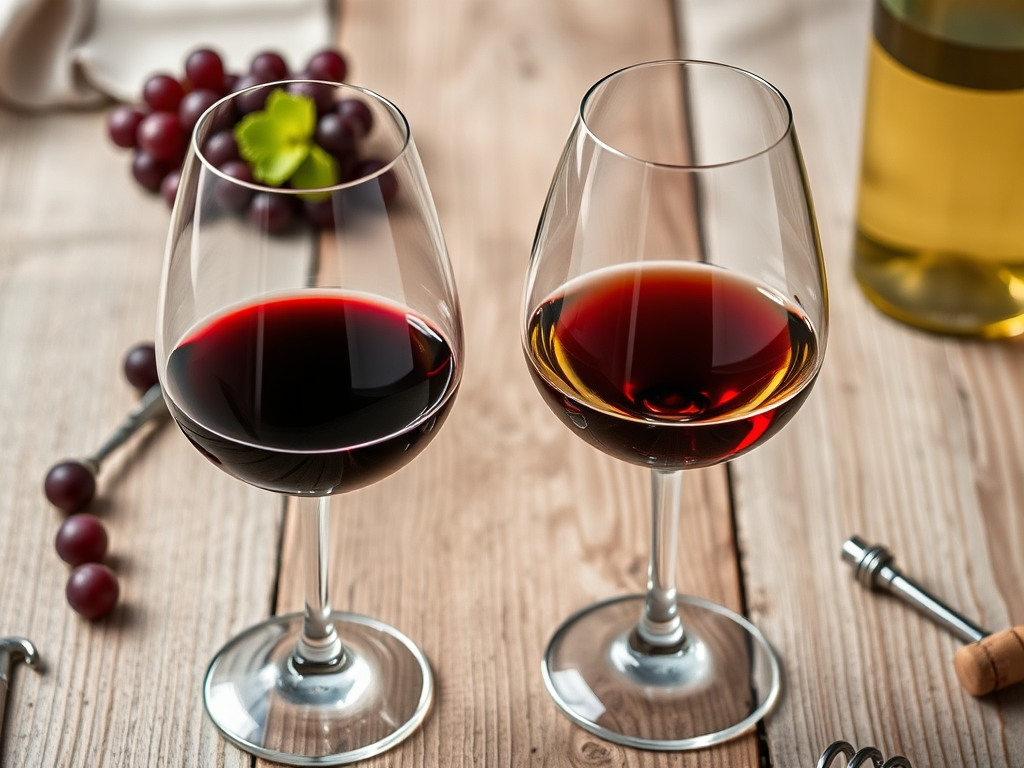
Understanding tannins and acidity in wine isn’t just wine-geek territory – it’s your secret weapon for finding bottles you’ll truly love. After working at a winery for several seasons, I’ve learned that while most casual drinkers focus on whether a wine tastes like cherries or chocolate, the real magic happens when you start noticing how wine physically feels in your mouth. This approachable guide will break down what tannins and acidity do, how they work together, and why they matter more than most people realize.
Why Tannins and Acidity Are the Hidden Heroes of Wine
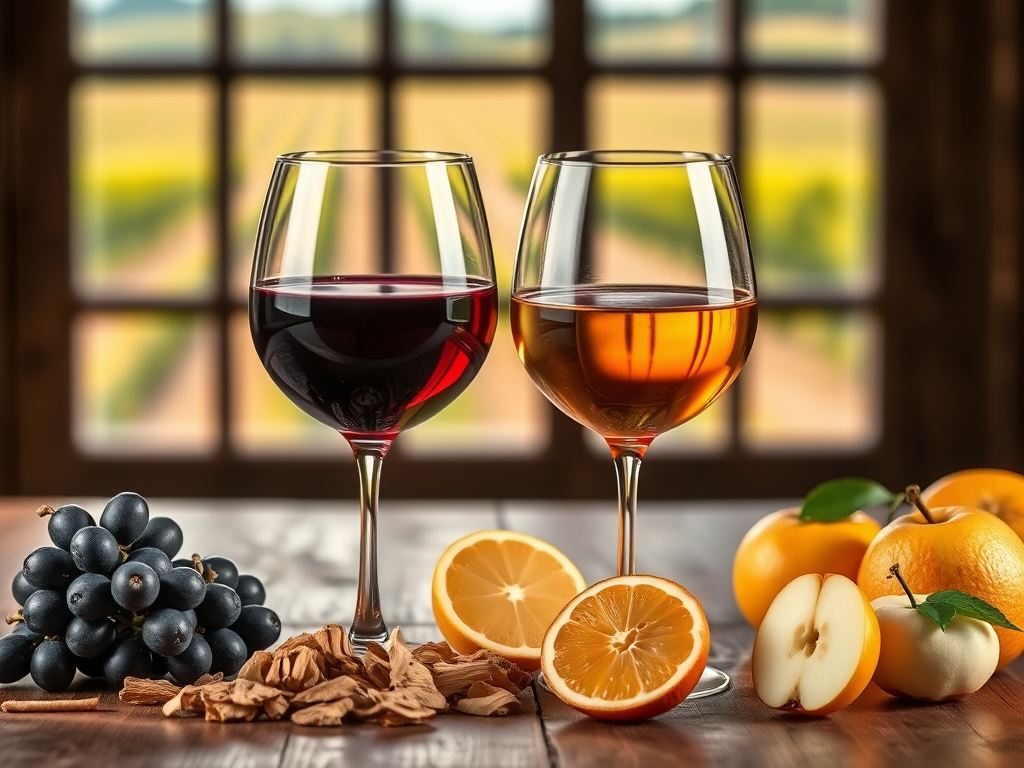
Tannins and acidity aren’t just wine-tasting jargon – they’re the backbone of every great bottle. Think of them as the wine’s skeleton and nervous system. While flavor compounds give wine its personality, tannins and acidity determine how the wine stands up and moves through time. Without proper structure from these elements, even the most flavorful wine falls flat, like a beautiful house with a weak foundation.
The beauty of tannins and acidity lies in their complementary relationship. Tannins provide texture, grip, and longevity, while acidity brings freshness, brightness, and balance. Together, they create the perfect tension that makes wine exciting. During a recent tasting with friends, we compared two Cabernets – one with balanced tannins and acidity felt complete and satisfying, while the other, with great flavor but weak structure, seemed forgettable.

As one of my favorite winemakers likes to say, “Acidity is the frame, tannin is the texture – together they sculpt the complete wine.” This interplay makes the difference between a wine that’s merely pleasant and one that’s truly memorable. Understanding this relationship has completely transformed how I shop for wine, letting me look beyond just flavor profiles to find bottles with the structure to match my preferences.
Wines with well-balanced tannins and acidity offer three major benefits:
- Structure: The architectural framework that gives wine its shape
- Balance: The harmonious relationship between all elements – sweetness, bitterness, alcohol
- Aging potential: The ability to evolve and improve over time
Learning to identify tannins and acidity has practical benefits too. When pairing with food, understanding a wine’s structure helps you create harmonious wine pairings that highlight both the dish and the drink. My dinner parties improved dramatically once I started matching food textures to wine structure rather than just focusing on flavors!
Wine Tannins Explained: The Texture-Makers
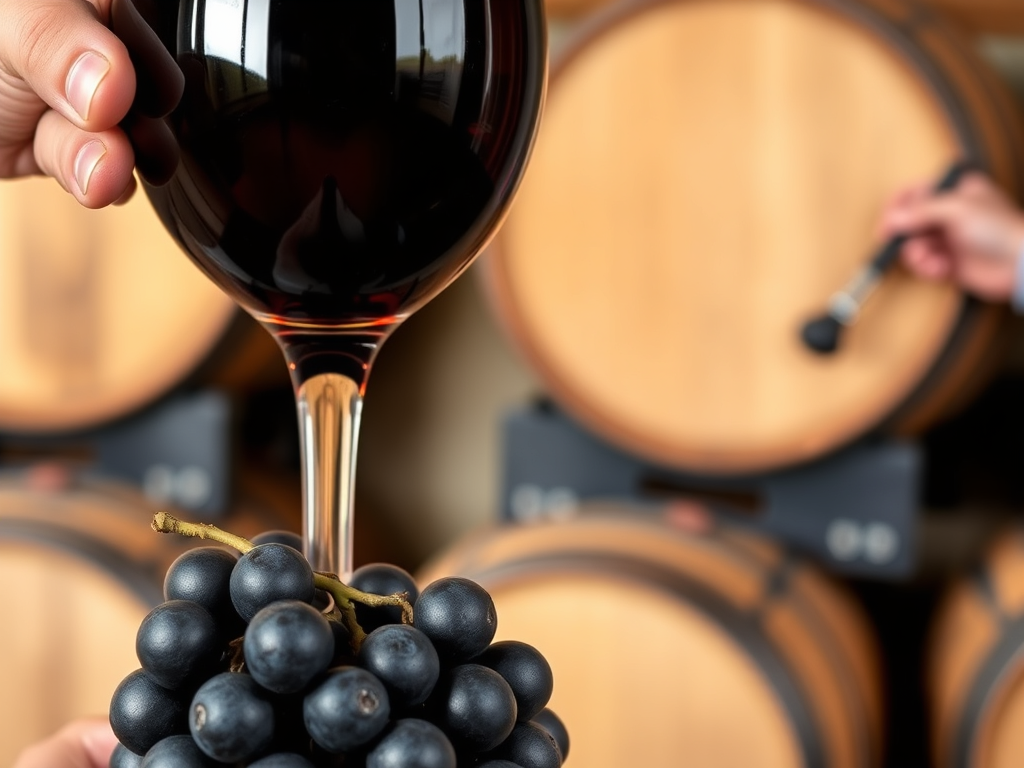
What exactly are tannins? They’re naturally occurring compounds found primarily in grape skins, seeds, and stems. They’re also absorbed from oak barrels during aging. Scientifically speaking, tannins are polyphenolic compounds that bind with proteins – including the proteins in your saliva – which creates that distinctive dry, astringent sensation.
The first time I really understood tannins was at a vertical tasting of aged Cabernet. The youngest wine (just released) had firm, almost aggressive tannins that dried out my mouth immediately. The oldest (15 years in bottle) had tannins that had softened into a silky, velvety texture. Same wine, completely different mouthfeel – all because of how tannins evolve with time.
What you’ll feel with high-tannin wines:
- A drying, puckering sensation (similar to strong, over-steeped black tea)
- Bitterness that gradually softens with age
- A textured or “grippy” mouthfeel that can feel rough or smooth depending on the wine
Tannins aren’t just about sensation – they serve important functions in wine. They work as natural preservatives and antioxidants, which is why high-tannin wines often age better. They also provide structural support for the wine’s flavor compounds, giving bold reds their impressive longevity. My wine collection definitely favors tannic reds because they continue evolving in fascinating ways over the years.
You’ll find tannins most prominently in:
- Red wines (which get more skin contact during fermentation)
- Some white wines aged in oak or made with skin contact (orange wines)
- Grape varieties like Cabernet Sauvignon, Nebbiolo, Syrah, and Tannat
If you’re new to exploring tannins, try this simple experiment that a professional sommelier taught me: Take a sip of strong black tea, swish it around, and note how your mouth feels afterward. That drying sensation is tannin at work! Now try the same with different red wines and notice how the intensity and quality of that sensation changes from wine to wine.
Acidity in Wine: The Bright Backbone

If tannins are all about texture and grip, acidity is all about brightness and liveliness. Think of acidity as the wine’s nervous system – it’s what makes a wine feel alive on your palate. Without adequate acidity, even the most flavorful wine feels dull and flabby, like music without rhythm.
My first real “aha” moment with acidity came during a comparative tasting of Chardonnay from cool-climate Oregon versus warm-climate California. The Oregon wine had this electric, mouth-watering quality that made me immediately want another sip, while the California wine, though richer in flavor, didn’t have the same refreshing finish. That vibrant quality? Pure acidity at work.
How to recognize acidity when tasting:
- Your mouth waters (similar to biting into a tart green apple)
- The wine tastes zesty, tangy, or bright
- Flavors seem lifted and energetic rather than heavy
- The finish has a clean, refreshing quality
Acidity plays several crucial roles in wine. It preserves freshness, balances sweetness, and maintains stability. In sweet dessert wines, acidity prevents them from tasting cloying and one-dimensional. In high-alcohol wines, it provides counterbalance to the weight of the alcohol. Even in aged wines, it’s acidity that keeps them vibrant decades after bottling.

The main acids in wine include:
- Tartaric acid – the primary acid in grapes
- Malic acid – think of the sharpness in green apples
- Citric acid – contributes zesty, bright notes
- Lactic acid – softer, creamier acid (often from malolactic fermentation)
Acidity levels vary dramatically depending on grape variety, climate, and winemaking decisions. Cool-climate wines and early-harvested grapes typically have higher natural acidity. If you’re looking to explore the spectrum, compare a German Riesling (high acid) with a warm-climate Merlot (lower acid) to feel the difference immediately. I keep a bottle of each in my wine rack for friends who want to understand this concept during casual tastings at home.
Knowing how to identify acidity has completely changed how I shop for everyday drinking wines. I’ve discovered I prefer wines with moderate to high acidity for their refreshing quality and food-friendliness – now I can scan a wine list with confidence!
The Perfect Tannin-Acid Dance: Structure and Balance

Great wines aren’t just about tannins or acidity in isolation – they’re about how these elements dance together harmoniously. Think of your favorite song – it’s not just melody or rhythm alone that makes it memorable, but how they complement each other. Wine works much the same way. The most memorable bottles achieve perfect balance between their structural elements.
My wine group recently blind-tasted several Italian reds, and everyone’s favorite turned out to be a Barolo – famous for having both high tannins and high acidity. It wasn’t necessarily the most fruit-forward or the boldest, but it had impeccable balance. Each sip started with bright acidity that awakened the palate, followed by firm tannins that gave substance and length to the finish.
When tannins and acidity are in perfect sync, they:
- Create multi-layered complexity and depth
- Balance each other’s extremes
- Help the wine pair beautifully with food
- Allow for graceful aging and evolution
I like to explain wine structure using furniture analogies. Think of a wine like a table: acidity is the legs that hold everything up, providing stability and support. Tannins are the surface – what you feel and touch directly. Without sturdy legs, the table collapses; without a well-crafted surface, it’s functional but not beautiful. The best wines, like the best furniture, need both.
This balance is why some wines that don’t seem immediately impressive can grow on you with each sip. My boyfriend initially dismissed Nebbiolo as too austere, but after learning to appreciate how its razor-sharp acidity and firm tannins create perfect tension, it’s become his favorite for special occasions. Understanding structure helps you appreciate wines that might otherwise seem challenging at first approach.
Finding wines with your preferred structural balance is a game-changer for building a collection you’ll truly enjoy. If you love the interplay of high tannins with bright acidity, look to classic wine regions like Piedmont (Barolo, Barbaresco), Tuscany (Sangiovese), or Northern Rhône (Syrah). If you prefer softer tannins with moderate acidity, explore Pinot Noir from various regions to find your sweet spot.
Wines That Showcase Perfect Tannin and Acidity Balance
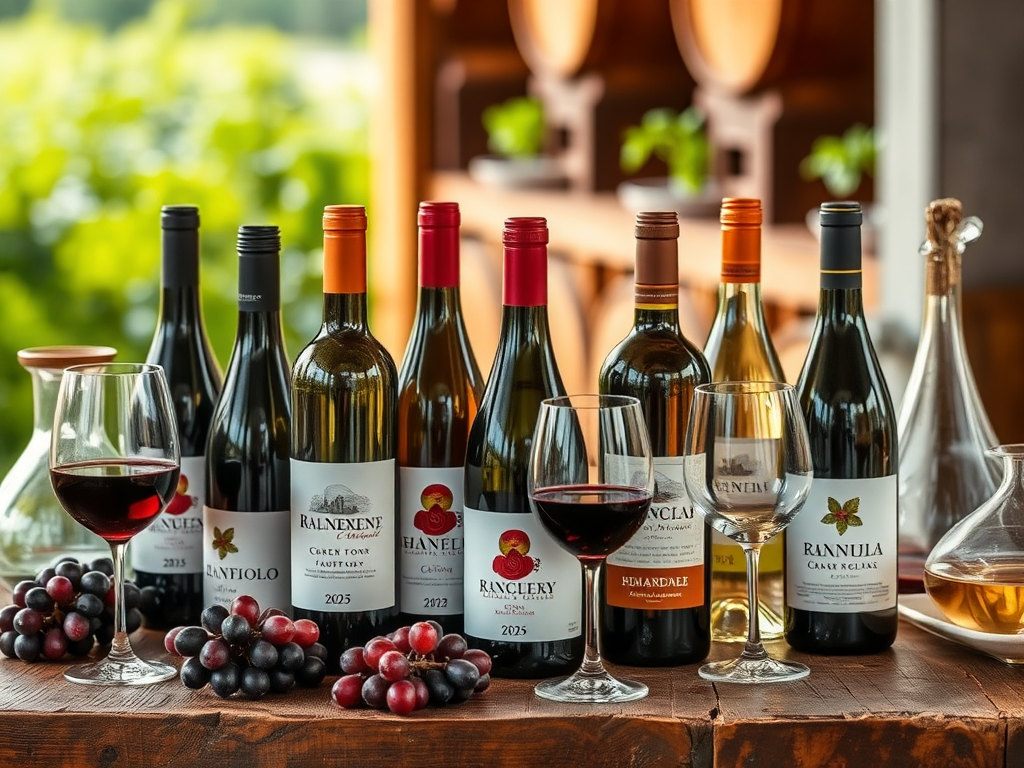
Some grape varieties and wine styles naturally achieve textbook examples of structure. These wines offer perfect case studies for understanding tannins and acidity in action. After years of tastings, I’ve compiled this cheat sheet of wines that brilliantly showcase different structural profiles.
For high tannins with moderate acidity, Cabernet Sauvignon from Napa Valley or Bordeaux demonstrates how powerful tannins create wines with serious aging potential. These wines feel substantial and commanding, with a grip that lingers. When shared at dinner parties, these wines always spark conversations about texture and mouthfeel – perfect teaching moments!
For bright acidity with softer tannins, few wines beat a good Pinot Noir from Oregon or Burgundy. These wines dance across your palate with vibrant energy while keeping tannins in a supporting role. My wine club voted a Willamette Valley Pinot as “most versatile food wine” specifically because of this structural balance.

For the ultimate balance of both high tannins and high acidity, look to Nebbiolo-based wines from Piedmont, Italy. Barolo and Barbaresco are masterclasses in structural harmony – they start with mouth-watering acidity and finish with firm, complex tannins. They’re challenging when young but become absolutely transcendent with age.
Here’s a quick reference table of wines and their structural profiles:
| Wine Type | Tannin Level | Acidity Level | Aging Potential |
|---|---|---|---|
| Cabernet Sauvignon | High | Medium | High |
| Pinot Noir | Low-Medium | High | Medium |
| Nebbiolo | High | High | High |
| Syrah | Medium-High | Medium | High |
| Dry Riesling | Low | High | High |
| Chardonnay | Low-Medium | Medium | Medium |
For white wine lovers, structure is just as important. High-acid whites like German Riesling, Chablis, and Albariño showcase brilliant structural precision despite minimal tannins. These wines rely almost entirely on their acid backbone for structure, proving that even without significant tannins, a wine can have remarkable architecture.
During my visits to Sonoma Valley wineries, I’ve noticed how winemakers talk about their structural decisions with as much passion as they discuss flavor profiles. Many taste from barrel specifically to evaluate structure before making final blending decisions – that’s how critical tannins and acidity are to the finished product.
How Winemakers Control and Shape Tannins and Acidity
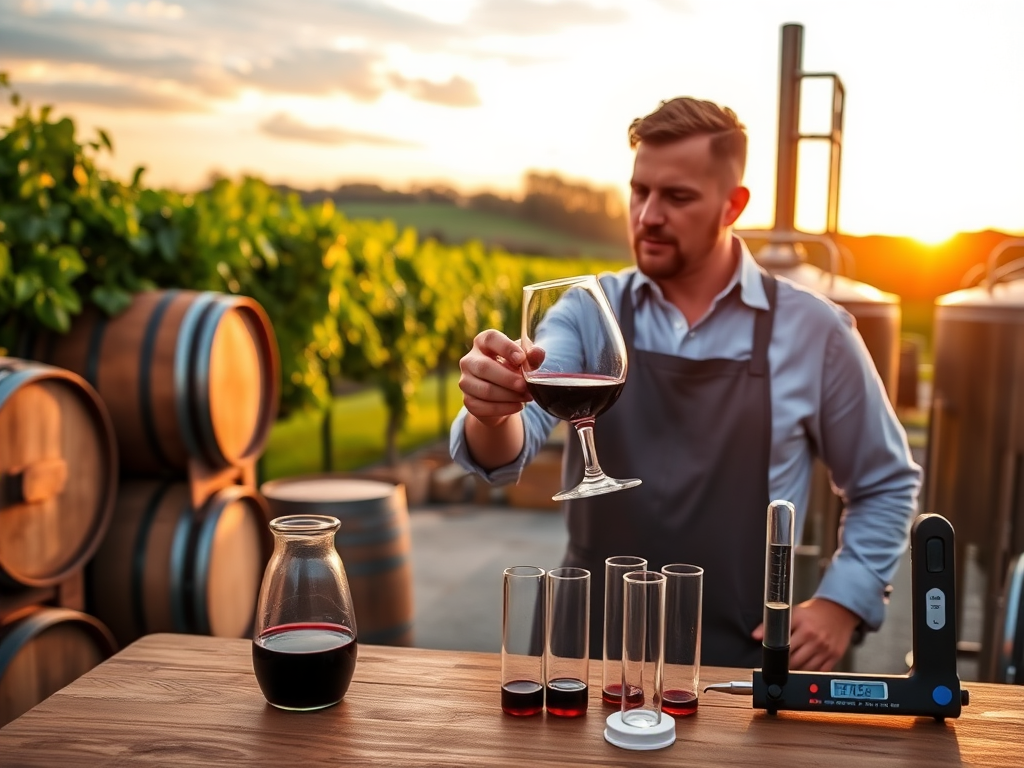
The presence and character of tannins and acidity don’t happen by accident – they’re carefully managed by winemakers throughout the entire production process. Understanding these techniques gives you insight into why wines from the same grape can taste dramatically different depending on who made them and how.
For tannin management, winemakers have several tools at their disposal. The duration of skin contact during fermentation is perhaps the most significant – longer maceration means more tannin extraction. My friend who makes home wine experimented with this by splitting a batch of Merlot, giving half a 7-day skin contact and half a 21-day contact. The difference was dramatic – the longer maceration created a wine with substantially more structure and grip.
Techniques for managing tannins include:
- Adjusting skin contact time (longer = more tannins)
- Gentle vs. aggressive pressing
- Cold soaking before fermentation
- Oak aging to integrate and soften harsh tannins
- Micro-oxygenation to soften tannins without extended aging
For acidity management, climate plays a huge role, but winemakers have techniques to fine-tune this crucial element as well. Harvest timing is the most natural approach – earlier picking preserves natural acidity, while later harvests allow acidity to drop while sugar rises. During a vineyard tour in Washington state, I watched the winemaker taste grapes daily, monitoring both sugar and acid levels to determine the perfect picking window.

Ways winemakers influence acidity include:
- Strategic harvest timing
- Acid additions before or during fermentation
- Malolactic fermentation (converts sharper malic acid to softer lactic acid)
- Blending from multiple vineyards with different acid profiles
- Vessel choice (stainless steel preserves acidity better than oak)
The aging vessel also dramatically affects both tannins and acidity. Oak barrels gradually soften tannins while allowing minimal oxygen exposure that helps integrate acidity. Concrete or clay vessels provide a middle ground, offering some oxygen exposure without adding oak tannins. Stainless steel preserves fresh acidity but doesn’t help soften tannins.
These technical decisions might seem abstract, but they directly impact your experience as a wine drinker. When you taste a wine that feels perfectly balanced – neither too harsh with tannins nor too sharp with acidity – you’re experiencing the results of countless small decisions made throughout the winemaking process.
Taste the Structure: Practical Tips for Wine Drinkers

Now that you understand tannins and acidity, how can you use this knowledge to enjoy wine more? Here are some practical tips I’ve gathered from years of tastings and conversations with winemakers that have completely transformed my wine experience.
First, start paying attention to how wine feels in your mouth, not just how it tastes. When you take a sip, notice: Does the wine make your mouth water (acidity)? Does it dry your palate or create a grippy sensation (tannins)? Does it feel balanced or does one element dominate? This simple shift in attention will immediately deepen your appreciation.
For building a wine collection with longevity, look for bottles with both substantial tannins and good acidity. These structural elements work as natural preservatives and allow wines to develop fascinating complexity over time. My small cellar focuses on wines with this profile – mostly reds from Piedmont, Northern Rhône, and cool-climate Cabernet regions.
Practical tips for exploring wine structure:
- For aging potential, seek high tannin + high acid wines
- For refreshing everyday drinking, prioritize bright acidity
- For food pairing versatility, look for balanced structure
- Match powerful, tannic wines with fatty foods (the fat softens tannins)
- Pair high-acid wines with rich or salty foods (the acid cuts through richness)
Temperature significantly affects how we perceive both tannins and acidity. Serving red wines too warm can make tannins feel harsh and alcohol dominate, while serving whites too cold can mask acidity. My rule of thumb: serve reds slightly cooler than room temperature (60-65°F) and whites slightly warmer than refrigerator temperature (45-55°F) to showcase structural balance properly.
Finally, remember that your perception of tannins and acidity will evolve with experience. Wines that once seemed too austere or sharp might become favorites as your palate develops. When I first started exploring wine, I found Barolo almost painfully tannic – now it’s one of my favorite styles precisely because of that distinctive structural character.

The most valuable lesson I’ve learned about wine structure is that balance always trumps boldness. A wine might impress initially with its powerful flavors, but without harmonious tannins and acidity, it won’t continue to satisfy or age gracefully. The wines that keep you coming back sip after sip? Those with impeccable structural balance.
Beyond the Flavor: Structure Makes Wine Unforgettable
Tannins and acidity are truly the unsung heroes of wine. While flavors might get all the attention in tasting notes, it’s these structural elements that determine whether a wine will be forgotten quickly or remembered long after the bottle is empty. They shape texture, define balance, and tell your taste buds how a wine should feel – not just how it tastes.
Next time you’re sharing wine with friends, try focusing the conversation on structure rather than just flavor. Ask everyone how the wine feels in their mouth, not just what fruits or other flavors they detect. You might be surprised how quickly even casual wine drinkers can identify and discuss tannins and acidity once they start paying attention to these elements.
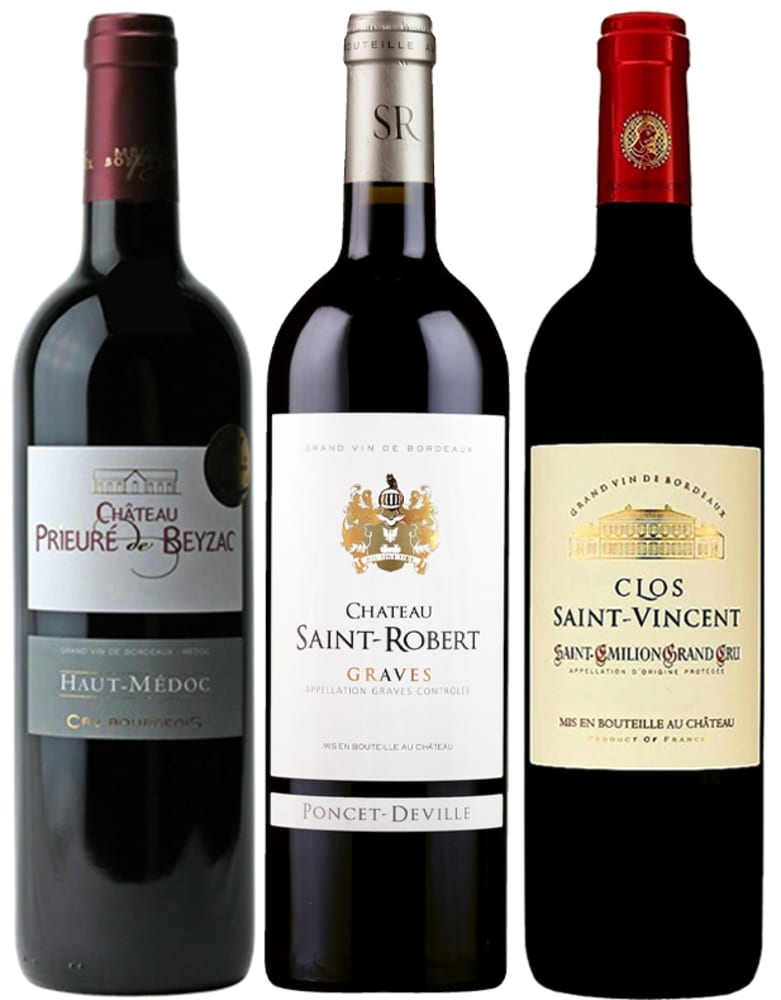
Understanding wine structure has completely transformed my relationship with wine. I’ve moved beyond simply drinking what tastes good in the moment to appreciating wines that offer structural complexity and balance. These wines don’t just satisfy – they fascinate, evolving in the glass and creating an experience that engages all the senses.
So the next time you’re sipping, take a moment to consider: Is the wine juicy or dry? Crisp or soft? Does it make your mouth water or pucker? That’s tannins and acidity talking – and once you learn their language, your wine journey will never be the same. Which wines have impressed you with their structural balance? I’d love to hear about your favorites in the comments!




